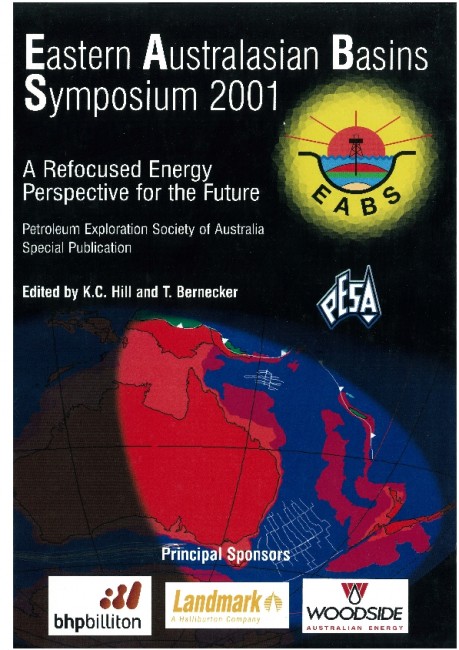Publication Name: Eastern Australian Basins Symposium 2001
Authors: R. Sutherland, P. King and R. Wood
Date Published: November 2001
Number of Pages: 34
Reference Type: Magazine Article
Abstract:
Southeastern Australia, New Zealand, and Antarctica were adjacent before Cretaceous rifting led to fragmentation of Gondwana. In many regions, rifting led to a first-order stratigraphic cycle of normal-faulted clastic terrigenous deposits, overlain by coastal plain and marine sediments. Petroleum systems have been influenced by the timing, style, and palaeogeography of Cretaceous rifting, as well as the structural and stratigraphic responses to Eocene-Recent tectonics.Rifting proceeded in three phases. During the Early Otway phase (160-100 Ma), while convergence, strike-slip and arc volcanism were still occmring along the Gondwana margin, initial rifting resulted in the early opening of the Southeast Indian Ocean. The Tasman Sea phase (100-80 Ma) involved very widespread continental rifting, which
culminated in seafloor spreading in the Tasman and South Pacific oceans. The Taranaki Rift phase (80-60 Ma) was spatially restricted, but may have been connected southward via a narrow zone of tectonic deformation to the Emerald fracture zones, and northwards via a broader zone into the New Caledonia Basin region. Rifting associated with eastward connection of the southeast Indian Ridge (80-40 Ma) affected the Otway Basin, and northward propagation of the Tasman Sea (80-52 Ma) affected eastern Australia, the northern Lord Howe Rise and
Chesterfield Plateau.
Eocene-Recent tectonics resulted in extensive deformation at the Australia-Pacific plate boundary and minor deformation near the terminations of large oceanic fracture zones. Structural traps associated with this deformation contain significant accumulations of hydrocarbons in the Taranaki and Gippsland basins. Opening of the Southern Ocean led to deposition of impermeable calcareous mudstones and carbonates that provicted an important stratigraphic barrier to later hydrocarbon migration, whereas regions near intense Cainozoic deformation had clastic sediments deposited, variously providing overburden, reservoirs,
and seals.
Cretaceous rift basins are likely to contain most of the offshore hydrocarbon resources, but they are sparsely explored. Basin-scale or play-concept exploration risk is best evaluated by consideration of the regional tectonic and palaeogeographic evolution as well as by appropriate comparison with the Otway, Gippsland or Taranaki basins.


